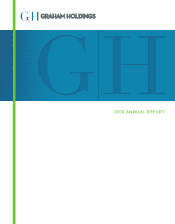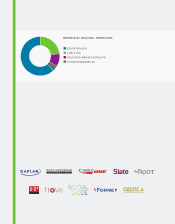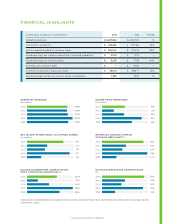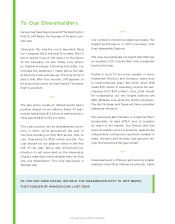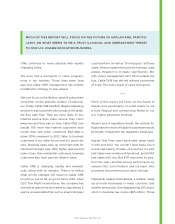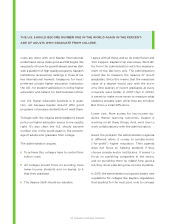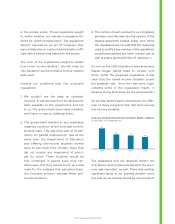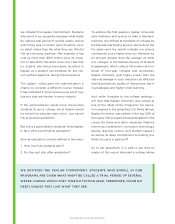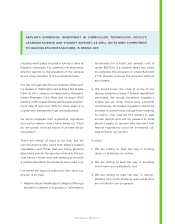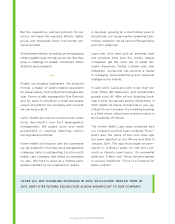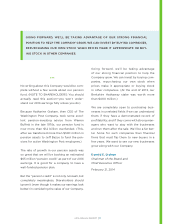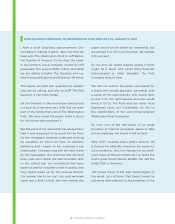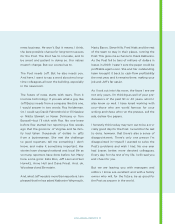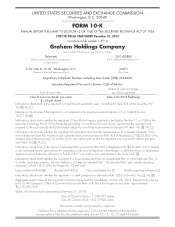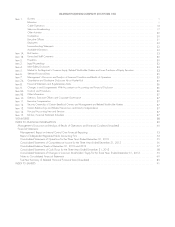Washington Post 2013 Annual Report Download - page 7
Download and view the complete annual report
Please find page 7 of the 2013 Washington Post annual report below. You can navigate through the pages in the report by either clicking on the pages listed below, or by using the keyword search tool below to find specific information within the annual report.
2013 ANNUAL REPORT | 5
in the private sector. These regulations sought
to define whether our education prepared stu-
dents for “gainful employment.” The regulations
weren’t required by an act of Congress; they
were initiated by a couple of administration o-
cials with a career-long hatred for the sector.
The core of the regulations sought to define
how much income students “should” have (in
the regulators’ opinion) relative to their student
debt load.
Among our problems with the proposed
regulations:
1. We couldn’t see the data on students’
incomes. It was derived from Social Security
data, available to the government, but not
to us. The government does make mistakes;
we’d have no way to challenge them.
2. The government wanted to see graduates
repaying a portion of the principal on their
student loans. This was a key part of its def-
inition of “gainful employment.” But at the
same time, the Department of Education
was oering low-income students several
ways to pay back their student loans that
did not require any repayment of princi-
pal for years. These students would be
fully compliant in paying back their stu-
dent loans, but they would count as a bad
mark for the colleges that educated them.
Our reluctant solution: educate fewer low-
income students.
3. The metrics chosen seemed to us completely
arbitrary—and this was also the opinion of the
Obama-appointed federal judge who threw
the regulations out. He said that the reasoning
used to justify a key number in the regulations
would have justified any other number just as
well (a pretty good definition of “arbitrary”).
As soon as the 2010 regulations were proposed,
Kaplan began taking steps to comply with
them. Under the proposed regulations, it was
clear that the lowest-income students posed
the greatest risks. (And the risks were huge:
violating some of the regulations meant, in
essence, being shut down by the government.)
So we reluctantly began cutting back our oer-
ings of many programs that had been serving
low-income students:
The regulations and our response weren’t the
only factors driving down enrollments: the econ-
omy was important, as well. There was another
significant factor in our lowered student count,
one that we, as owners, should be very proud of:
2013201220112010
KAPLAN HIGHER EDUCATION STUDENT ENROLLMENTS
(in thousands, as of September 30)
112
80 73 65

